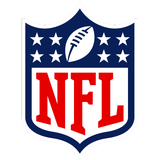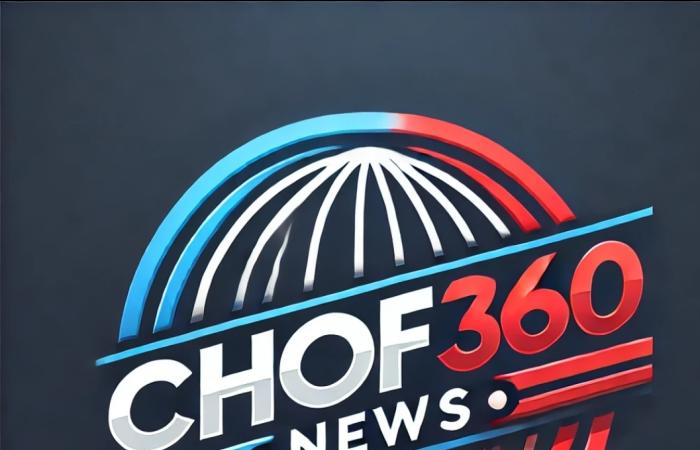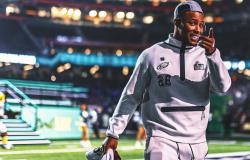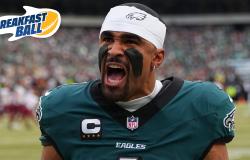The first half of the Super Bowl was uneventful, which is exactly what the people running it 12 years ago wanted. No controversies, no incidents, nothing to really worry about. Even Beyonce's halftime show went off without a hitch.
Truth be told, the game wasn't all that exciting either. When Jacoby Jones returned the opening kickoff of the second half 108 yards for a touchdown, the "Harbaugh Bowl" — between John's Baltimore Ravens and Jim's San Francisco 49ers — was in danger of turning into a rout.
Meanwhile, high atop the massive Superdome in New Orleans, inside an electronic fortress they called "Control," Frank Supovitz, the NFL's senior VP of events, was finally able to relax for just a moment. The league had agreed to let CBS send a "60 Minutes" crew tail him for a behind-the-scenes story on Super Bowl operations. Now was a good time for him to do an interview and let down his guard.
So he stood there in Control, with his back to the field, as CBS reporter Armen Keteyian asked him a question. But before Supovitz could finish his answer, Keteyian cut him off.
ADVERTISEMENT
"Uh oh," Keteyian said. "That's not good."
Supovitz wheeled around and looked at the darkened arena below him and calmly said "All right. We lost lights."
"I could see it in his eyes. It got very dark in NFL Control," Supovitz recalled in an interview with FOX Sports. "Usually when you have 60 minutes standing next to you and something goes wrong, that's a bad day."
It wasn't good, especially in those first few moments when half of the Superdome suddenly lost power a little more than half way through Super Bowl XLVII and nobody, anywhere had any immediate idea why. There was confusion on the field, uncertainty in the stands, and fear for some of the 75,000 or so fans, players, officials, workers and media packed into the dark arena.
And at that moment, it was clear that the legacy of that Super Bowl wouldn't be the final game of Ray Lewis' Hall of Fame career, Colin Kaepernick's last moment on the NFL's biggest stage, the "Harbaugh Bowl," the 49ers' wild but ultimately fruitless comeback, or the Ravens' eventual 34-31 win.
That Super Bowl on Feb. 3, 2013 — the last one held in New Orleans before Super Bowl LIX kicks off on Sunday night — will forever be remembered for its 34 minutes in the dark.
'We never simulated a power failure'
In the week before the Super Bowl, as fans began to fill Bourbon Street, there were some hints about what was about to occur. During a test run of Beyonce's halftime show there were power fluctuations, according to people involved with the preparation, including the loss of a bank of lights.
The NFL was sure they had fixed that issue, though, and no one was worried that it might happen again. In fact, about a week before the game, at a Hyatt hotel near the dome, Supovitz oversaw what he called a "tabletop simulation" of the Super Bowl for several hours that included "everybody who would be in a decision-making role at NFL control." They would imagine all sorts of disasters and emergency scenarios, and calmly game out how they'd handle them.
Or all but one.
"In all the years we did it," Supovitz said, "we never simulated a power failure."
"But that's OK," he added. "Because what it did was prepare us to just deal with whatever was presented to us."
They were in the right spot for that on the night of the game. "Control" was a room filled with all sorts of cutting-edge technology and experts in a variety of fields. "We have eyes on everything," said Brian McCarthy, the NFL's VP of communications who was in that room that night. The room had "multiple screens (with) views of every possible angle inside the stadium and outside."
Every piece of critical information ran through there. All the people in charge of every critical department were there.
"That," McCarthy said, "is the nerve center of Super Bowl."
And for the first few minutes of the blackout, that's the only place where anyone was able to get information about what was going on.
'Is this one of those 9/11 events?'
What was known at that point were only the basics. The Ravens controlled the first half of the game, taking a 21-6 lead on three Joe Flacco touchdown passes. Beyonce's halftime show was spectacular, and the light show that went with it worked perfectly. The league and SMG, the management company that ran the Superdome, had decided during the week before the game to switch everything in Beyonce's show to an outside power source, and it worked to perfection.
After it was over, the stadium lights powered back up and the game was back on.
Then Jones scored on the opening kickoff, and the 49ers ran three more plays — the last of which resulted in Kaepernick getting sacked. On the CBS broadcast, analyst Phil Simms was dissecting what went wrong on the sack when his voice disappeared mid-sentence. The broadcast continued with the now-silent replay for another 12 seconds before cutting to shot of players standing around on the field.
Only when they cut to a dimly lit Ravens coach John Harbaugh on the sidelines was it clear to the 164 million viewers around the world that, at 7:38 p.m. local time in New Orleans, the Superdome lights had gone out.
"I remember the first thing I thought was ‘Is this one of those 9/11 events?'" Solomon Wilcots, one of the CBS sideline reporters that day, told FOX Sports. "I thought ‘What's going on here? Are we safe?' So I started walking towards the tunnel because I saw some league people there gathering, and I started asking them ‘Hey, what's going on?'
"But nobody could tell you."
That's because nobody knew. And it would be a while before anyone outside Control had any information at all. It wasn't total darkness inside. Only the lights and power on the west side had gone out. But there was an eerie feeling looking over the shadowy field and stands from the press box up near the roof, and the information blackout made it seem worse.
Super Bowls are classified as Level 1 national security events by the Department of Homeland Security. There are always threats made towards big events like that. So inside the literal and figurative darkness, it was easy to fear the worst.
Down on the field, the players weren't immune to that. At first, Wilcots said, they were all just milling about, looking around the stadium. Ravens quarterback Joe Flacco said later he even thought the field was still lit enough to continue the game. But at some point, Wilcots recalled players growing concerned about their family up in the dark parts of the stands and the lack of information they were getting.
The only thing information communicated to them was that, since the power was out in the 49ers locker room, both teams would have to stay on the field.
Meanwhile, John Harbaugh was livid. The Ravens coach was seen screaming at stadium officials and even at game officials. He was upset because the 49ers were apparently still able to communicate with coaches in their upstairs booths, while the blackout had cut the Ravens' communications off completely.
"A total overreaction on my part," he later admitted. "I didn't have very much poise in that moment."
Wilcots was stationed on the Ravens' sideline and the power in his earpiece and microphone had gone out too, so he had no way of communicating with CBS' producers. He figured that at some point, though, the power would be back up and they'd come to him, one of their reporters on the scene, looking for information.
"And when they do come to you, you better have something to report and you better have something credible," he said. "But the league people weren't telling me anything and the stadium ops people didn't know anything."
That's when he went to John Harbaugh to "talk strategy." But even that didn't work out well.
"I said, ‘Hey coach, what are you telling your players?" Wilcots recalled. "He was like ‘I don't know. What should I say?'"
'You feel that feeling in the pit of your stomach'
When the lights went out, Supovitz admitted "We didn't know" if it was terrorism, at first. All they knew was that the lights on the west side of the stadium were out, a sign that one of the two cables that brought power into the stadium had been "lost." They'd quickly learn that everything was out on the west side — lights, escalators, the credit card machines at concessions stands. There were even elevators stuck with fans inside.
There was a remarkable lack of panic, though, as terrifying as it might have felt for some inside the dome. Supovitz, the man responsible for the event, said he snapped into "response mode" as did everyone around him in Control.
"It was almost like being in a boat in the middle of the ocean, but with world-class sailors, knowing that we were in good hands," McCarthy said. "They were the best of their best in each of their disciplines. So there was never a sense of panic."
"All of us were anxious," Supovitz added. "We weren't panicked, but of course you feel that feeling in the pit of your stomach. And our job is to get back up and running, so that's what we did."
While the players were trying to stay loose, and fans were singing the opening bars to the song "Seven Nation Army" a cappella while looking around in the dark, things in Control were happening fast. Supovitz said it took law enforcement less than two minutes to rule out terrorism, a city-wide power failure, or a fire. And it took less time than that for the technicians to plot out their next steps.
The stadium operations people began shutting down the air conditioning, escalators, refrigerators and some excess lighting so the one working electrical feeder wouldn't overload. After about eight minutes, they had both diagnosed and solved the problem and began to power back up the lights. But these were older, pre-LED lights that needed about 10 minutes to warm up.
By then, there was a sense that the crowd was growing restless. The NFL had someone monitoring social media and Supovitz said they noticed "people were already starting to chirp about whether they should leave the building." The NFL had already determined the venue was safe and the situation could be resolved, but they needed to tell that to the fans before they headed to the exits. In the frantic first minutes, there had been no communication to the public at all.
So they wrote out a message on a sheet of paper for the public address announcer to read to fans, which he could do because his system came equipped with a battery backup for just this type of situation. But of course, the PA booth was on a different floor than Control. So Supovitz sent someone sprinting down the stairs to deliver the script.
"We couldn't get in touch with him by telephone or walkie talkie because all those systems were down," Supovitz said. "And he very wisely didn't say anything until we gave him a script to read."
The message was simple — basically "Stay calm".
And remarkably, everyone did. In fact, the 71,024 fans turned it into a party, singing to their own music and even doing The Wave.
"In fact," Supovitz said, "my recollection was it was the best half hour of beer sales we ever saw at the Super Bowl."
'Tell me this won't happen again'
CBS eventually cut to a commercial as they worked on getting their broadcast back up in full. Eventually, they were able to get Steve Tasker, their reporter on the 49ers sideline, connected so he could describe the scene. There still wasn't any way to get Simms and Jim Nantz back on air.
Wilcots was eventually able to plug his equipment into a hard line down on the field so he could communicate again with the broadcast truck again. But even that didn't give him any clarity.
"They were in just chaos," he recalled. "They were trying to figure out things like the league was trying to figure out things, and like the stadium ops people were trying to figure out things."
And then the rumors started to spread.
"First they were saying it was a power outage in the city," Wilcots said. "Then they were talking about a drain on the generators from Beyonce, and that it happened during the rehearsal. But there wasn't any credible source on that. It was just hearsay."
The players were growing frustrated, too. "They were stunned," Wilcots recalled. "They were looking around like ‘What's going on?'
"Nobody knew anything (on the field). That was the disappointing part. It was hard to get to the people who you think should have the answers, and then you get to them and they have nothing. That was frustrating."
It was frustrating up in Control, too, even as they began to solve the problem and waited for the lights to come back up. They were back in full about 24 minutes after they first went out, but Supovitz delayed the restart of the game so he could run checks on all the other systems. It was a good thing he did, because the Ravens' coach-to-quarterback communications system had gone out, too, and needed to be repaired. They also had to reset the scoreboard clocks — frozen with 13:22 left in the third quarter — and double-check the instant replay system, too.
"We really went through every system, one at a time, to make sure everything was back," Supovitz said. "Because if you've down for 24 minutes, what's another 10 to get it right?"
Then, and only then, did they finally send word to the field that play in the Super Bowl could resume. CBS sent their broadcast back to New Orleans where Nantz and Simms said the restart was about a minute away. The players went back to their sidelines. The 49ers offense and Ravens defense took the field. The ball was placed at the San Francisco 40-yard line.
And then referee Jerome Booger turned on his mic — which once again was working — and said to the world, "Resume action. Third down and 13. Let's go."
Those words were a welcomed relief to everyone watching inside the stadium and on television — everywhere, in fact, except up in Control. Supovitz was huddled with Doug Thornton, a vice president at SMG, still going over everything to make sure nothing was missed.
"I remember turning to him once everything was back and saying ‘OK, Doug, tell me this won't happen again.'" Supovitz said. "And he said, ‘I can't.'
"That moment was probably the most sobering."
'Come on, keep the clock going'
It didn't happen again. There wasn't so much as a flicker in the power systems or the lights for the rest of the game. But the Ravens' power sure did seem to go out in the third quarter, as the 49ers mounted a furious comeback. They scored 17 unanswered points to turn a blowout into a 28-23 game. They even got within 5 yards of the go-ahead touchdown late in the fourth quarter before three straight incompletions by Kaepernick ended their hopes with 1:46 to play.
The Ravens held on for that 34-31 win, but that didn't stop some of them from wondering what would've happened if the lights had stayed on. The conspiracy theories, in fact, were born in the interview area right after the game ended.
"Jim Harbaugh, he got a little trick up his sleeve, huh?" said Ravens linebacker Terrell Suggs. "It was too much at that moment, so I saw him radio into his little headset. He said: 'Red team go'. He gave out order 66: ‘Turn the lights out, slow the Ravens down.'"
"I'm not going to accuse nobody of nothing because I don't know facts," Ray Lewis told NFL Films a few months later. "But you're a zillion-dollar company, and your lights go out? No. No way. … You cannot tell me somebody wasn't sitting there (saying) ‘The Ravens (are) about to blow them out. Man, we better do something."
Of course, it wasn't some rogue 49ers fan flipping a switch or pulling the plug. Still, there is no doubt to anyone that the blackout had an impact. Even John Harbaugh admitted that it "probably gave (the 49ers) an opportunity to get their balance."
And in that moment, it still wasn't clear exactly what happened and why. Even after the lights came back, Thornton was sent running down to field level — by stairs because nobody in that stadium wanted to hop in the small, slow elevators so soon after a power outage — so he could monitor the situation from the electrical vault.
Supovitz, meanwhile, stayed up in Control hoping that whatever the technicians did to fix the problem would hold.
There were no guarantees.
"I would say that I felt probably as anxious, or maybe a little bit more, throughout the second half because we didn't know it wasn't going to happen again," Supovitz said. "We didn't know what it was at the time. So every time the clock stopped, because somebody stepped out of bounds or there was an incomplete pass, it was like ‘Oh come on. Keep the clock going.'
"‘We want to get out of this without another issue.'"
They would learn, eventually, that the blackout was caused by a malfunctioning relay inside one of the two feeder cables that brought power to the Superdome. Entergy, the local power company, had gone on Twitter shortly after the blackout to insist they weren't responsible, but of course their equipment was eventually found to be at fault.
The battle for blame could wait, though. The more important part to Supovitz was that the game and event were over and nothing else went wrong on his watch. The years of planning, the exercises and discussions, all resulted in a textbook lesson in how to manage a crisis. A few years later, he even used the stories from Super Bowl XLVII in a book he wrote called "What To Do When Things Go Wrong."
And three days after the game was over, after the fans and teams and media and workers had all safely had it to the exits, he was even able to watch the behind-the-scenes segment of Showtime's short-lived "60 Minutes Sports" program and re-live every harrowing moment with a sense of pride.
"It brought back the memories of what we did," Supovitz recalled. "When you're in the midst of all of that you're not really internalizing any of it. You're just responding and doing what needs to be done to get the game back underway. So the fact that 60 minutes just happened to be there was not a bad thing either, to be able to demonstrate that we took care of it in the most professional way possible."
In the end, he said, it was a "success" because they got the game back up and running and kept everyone safe. But there is no doubt at all that his favorite part, his best memory of Super Bowl XLVII, was the moment it was all finally over, and the lights could be turned off as planned.
"Seriously," Supovitz recalled, "it was a tremendous relief getting to the end."
Ralph Vacchiano is an NFL Reporter for FOX Sports. He spent the previous six years covering the Giants and Jets for SNY TV in New York, and before that, 16 years covering the Giants and the NFL for the New York Daily News. Follow him on Twitter at @RalphVacchiano.
recommended






